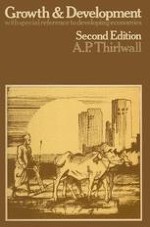1978 | OriginalPaper | Chapter
Planning Economic Development
Author : A. P. Thirlwall
Published in: Growth and Development
Publisher: Macmillan Education UK
Included in: Professional Book Archive
Activate our intelligent search to find suitable subject content or patents.
Select sections of text to find matching patents with Artificial Intelligence. powered by
Select sections of text to find additional relevant content using AI-assisted search. powered by
Planning in a variety of forms is frequently advocated as an alternative to the market mechanism, and the use of market prices, for the allocation of resources in developing countries. Reliance on the market mechanism and market prices for resource allocation is attacked for several reasons. First, given the natural preference of people for present rather than future satisfaction, resources in a free market will tend to be allocated for the production of goods for immediate consumption rather than for building up the means of production, i.e. for the production of capital goods. Left to itself, the operation of the market is likely to lead to a much slower pace of development and a much lower level of future welfare than if resources, via some form of interference with the market mechanism, can be diverted to the production of capital goods. Second, as we have already seen, market prices may provide a very imperfect guide to the social optimum allocation of resources because they do not reflect the opportunity cost or value to society of the use of factors of production or the production of certain commodities. A perpetual shortage of capital and foreign exchange, and a surplus of labour, at existing market prices is prima facie evidence of structural disequilibrium and a very imperfect market system which may not operate to the benefit of society at large. Third, because of externalities many projects that developing countries need, and which would be profitable to society, may not appear profitable under a pure market system in which all investment decisions are left to private individuals.
